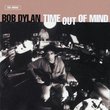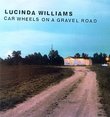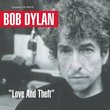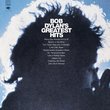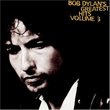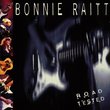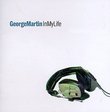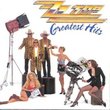| All Artists: Bob Dylan Title: The Bootleg Series, Vol. 4: Bob Dylan Live, 1966: The "Royal Albert Hall Concert" Members Wishing: 7 Total Copies: 0 Label: Sony Original Release Date: 10/13/1998 Release Date: 10/13/1998 Album Type: Live Genres: Country, Folk, Pop, Rock, Classic Rock Styles: Contemporary Folk, Singer-Songwriters, Blues Rock, Folk Rock Number of Discs: 2 SwapaCD Credits: 2 UPC: 074646575925 |
Search - Bob Dylan :: The Bootleg Series, Vol. 4: Bob Dylan Live, 1966: The "Royal Albert Hall Concert"
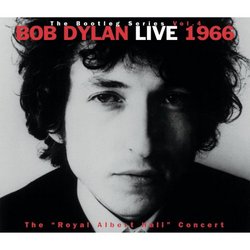 | Bob Dylan The Bootleg Series, Vol. 4: Bob Dylan Live, 1966: The "Royal Albert Hall Concert" Genres: Country, Folk, Pop, Rock, Classic Rock
Nineteen ninety-eight: The same year he dances with Soy Bomb at the Grammys, his record label finally issues Bob Dylan's ultimate live document. A classic case of not giving the audience what they want but what they need, ... more » |
Larger Image |
CD DetailsSynopsis
Amazon.com's Best of 1998 Nineteen ninety-eight: The same year he dances with Soy Bomb at the Grammys, his record label finally issues Bob Dylan's ultimate live document. A classic case of not giving the audience what they want but what they need, Mr. Dylan's oft-bootlegged 1966 gig begins with lovely and supple folk that foreshadows folk music's turn from protest song to introspection. The album's true highlight is the legendarily ill received and rocked-out electric set, with Dylan backed by members of the Band. There are too many perfect, on-fire guitar solos by Robbie Robertson to count, and Dylan himself responds to the audience's angry bewilderment with equal parts menace, grace, and brilliance. --Mike McGonigal Similarly Requested CDs
|
CD ReviewsGet thee behind me, Satan! John | Cleveland, OH | 11/24/2002 (5 out of 5 stars) "1966, Royal Albert Hall Manchester, England. Bob Dylan straps on an electric guitar to the chagrin of all his fans. Yes, it's the infamous Judas concert. This also is the best-recorded Dylan concert you could hope to find. The quality, both technical and musical, is superb. This may be billed as a "bootleg" but the sound is nearly that of a studio album. The first CD of course is Dylan's acoustic set. For seven songs, it is just Dylan, an acoustic, and a harmonica and it is nothing short of amazing. Dylan does not make one false step in the entire set, perhaps wanting to give the old folk days a good send off before ripping into R 'n R. He seems to be playing with a new sense of vigor, although it may be just excitement at not knowing how the crowd will respond to the coming electricity (he had had bad experiences when first plugging in at the Newport Festival - he had to come back and do some acoustic numbers to calm the crowd down). Even the song Mr. Tambourine Man, which I never liked that much, has new life breathed into itThe second CD is Dylan's electric set, backed by a full band. When I first listened to this, I expected to hear loud booing right away but I was surprised that the audience not only claps loudly for Dylan, but actually laughs when he jokes at the beginning of I Don't Believe You ("This is `I Don't Believe You', it used to be like that (referring to acoustic) now it goes like this") before ripping into the song. I was expecting an immediate outcry and I admit I was slightly disappointed that the much-hyped Judas concert was turning out to be nothing like I thought. Then at the end of Tom Thumb's Blues the crowd really starts to lay into Dylan, interrupting him when he talks by clapping loudly as well as heckling him (I could barely make out someone yelling "Sell out!!"). It really gets bad before Like a Rolling Stone though. After the clapping for the previous song dies down there is a moment of nearly complete silence and someone yells clearly "Judas!" and is met with rousing applause from the rest of the crowd. When that dies down you can hear someone once again yelling about how Dylan has "sold out". "I don't believe you" Dylan replies, then right before the song he says "You're a liar!" The crowd is so loud at this point that Dylan turns to the band and yells "Play f**king loud!" And they certainly do! The version of Like a Rolling Stone that follows is something to behold. Dylan's singing is fueled by the crowd's boos and insults and is without a doubt his best performance of the song to date.Ignoring the historic significance of the concert, the music itself on the electric half is Dylan's best. Every song is infused with new energy, and puts the original versions to shame. Perhaps it is because of the crowds boos, the novelty of performing with electrics for the first time, but whatever it is you can't deny it is something special. If I had to pick favorites, I would pick everything from Leopard-Skin Pill-box Hat through Rolling Stone. The whole thing is great, but the band seems to get more energized and louder as the evening goes on (again, probably propelled by the reaction from the crowd). This is nothing short of essential listening for any fan of good music.Whether you buy it to hear the rock and roll history, the great music, or just because you are a Dylan completist, the reason does not matter. What matters is that you buy this. It is an experience that you won't soon forget." Review #141 running_man | Chesterfield Twp., MI | 01/19/2004 (5 out of 5 stars) "I'm not sure what I can say that hasn't been said in the 140 Amazon reviews that have preceded this one, but that didn't stop person #140 or #139 from spouting off, so I'll be darned if it's going to stop me! This particular performance, and the 'real' bootleg that circulated for many years before Columbia finally gave it an offical blessing, probably has as much written about it (or more) than The Beatles first appearance on Ed Sullivan, or the tragic Stones concert at Altamonte. I suppose only Woodstock has garnered more attention, and it took over a dozen bands to eclipse it.Now I'm not a Dylan junkie... I have owned a number of his vinyl discs down through the years, exclusively his post-motorcycle accident productions. In fact, his re-emergence LP, 'Nashville Skyline' was the first one to catch my interest, mainly because in 1969 I was 15 years old and ready to turn an ear to what I perceived as more 'sophisticated' music, and partly because of all the hype that accompanied his return. So a large part of the appeal in owning this particular live collection is owning a bit of that earlier epoch, the pre-motorcycle accident era, in Dylan's portfolio. I actually find that to be a bigger part of the appeal than the alleged historical importance.To appreciate the extent of the folk crowd's dissent with Dylan going electric, it is essential to hear just how staid this audience was prior to the power being turned on. Throughout the acoustic set they are the picture of propriety. So when Dylan fires up 'Tell Me, Momma' with The Hawks/The Band, one realizes how goading the several catcalls (all of which receive audience support) and slow-clapping really are. As the 1960's would progress, such timid discord would seem frivolous. What is truly entertaining is to hear Dylan handle it, first seducing the crowd into stopping their slow-clapping by babbling, and then saying "...if you only just wouldn't clap so hard". He of course answers the famous "Judas" taunt by bantering with his accuser, and then finally drowning it all out with the very object of their scorn, instructing The Band to "play loud". All in all, however, the blaring rock cords are met with loud applause from the vast majority of those in attendance, and the actual cat-callers are few. Perhaps the more astute members of the audience knew they were in for it when, during the acoustic set, Dylan converted electric numbers (such as 'Desolation Row') from 'Highway 61 Revisited' to acoustic. One good turn deserved another. For those who wondered why Dylan had to abandon the acoustic folk nest that had nurtured his early career in favor of powered sound, a simple listen to disc two provides a loudly resonating answer: it was even better that way. Dylan reaches back to his debut 1962 LP for 'Baby Let Me Follow You Down', and his 1964 'Another Side of Bob Dylan' for 'I Don't Believe You' and 'One Too Many Mornings' audaciously elevating the mood of these acoustic masterpieces electronically. Virtually every number on the electric side is a toe-tapping delight. The recording is extremely fresh and clean... Columbia records was doing professional recordings of the tour, and recording technology was beginning to catch up with the demands of rock artists. The only miscues, which today would be handled by splicing in alternate takes from other venues on other nights, are slight drop-offs on the vocals at the very beginning of 'Tell Me, Momma', and briefly on 'Ballad Of A Thin Man' as Dylan switches mics to play piano. Both deficiences are readily corrected.Dylan had already been performing electric before May 17, 1966 rolled around. He first went electric at the 1965 Newport Folk Festival, and his 1965 'Bringing It All Back Home' LP had an acoustic and electric side, so really there should have been no surprises.Looking over the setlist reveals the treasures purchasers of this CD are in for. Every song is a winner, whether acoustic or electric. Isn't it great that we can hold history in our hands, and replay it over and over for our ears? If you cared enough to read about this, you must be thinking about owning it. Perhaps Bob said it best: don't think twice... it's alright." Summary running_man | 10/02/1999 (5 out of 5 stars) "Oh **, you're gonna need this one. Just don't make it your very first Dylan purchase, because somewhere between Highway 61 Revisited and the May evening preserved here Bob stopped by Mars to pick up a few pointers on being strange. He's not stoned out of his gourd (Manchester was quite probably the most sober show of the tour), but he's a million miles away from manchester during the acoustic set. During the electric set, he's very much there, and very pissed off. I thought "Hard Rain" was an angry album until I first heard this one. As far as the performances go, you've got the world's most perfect rendition of Just Like A Woman, a strung-out Baby Blue, and an epic, wholly deconstructed Tambourine Man with harp solos that come from God knows where and then evaporate back into the ether, and that's only the solo acoustic set. Then there's the madness of Bob & The Hawks on disc two, cranking out some of the best and the loudest rock and roll the world had seen in 1966 (they couldn't really hear this great music back in 1966, since the PA distorted so badly in the old music halls that nobody in the audience knew what the fuck was going on). The oldest songs are the best, with the venomous I Don't Believe You, the lilting Baby Let Me Follow You Down, and the (once gentle) One Too Many Mornings coming between the bookends of wildness. Tell Me Momma is otherwise unreleased, and must be heard to be believed. Like A Rolling Stone, of course, is preceded by the "Judas incident," leading someone (I think it was Robbie Robertson, but you can say it was Bob if you really want to believe that) to yell "Get ** loud!!" to the Band, and believe me, they did as they were asked. it's deafening rock and roll, without a net. If you've heard Stones' or Beatles' live shows from this period, get ready for the surprise of your life. Bob and the boys could hear what they were doing, and the playing is fabulous; the recording, to put it mildly, is a joy. There's also a wonderful 52-page booklet full of pictures and Lord knows what all else. A necessity."
|

 Track Listings (7) - Disc #1
Track Listings (7) - Disc #1